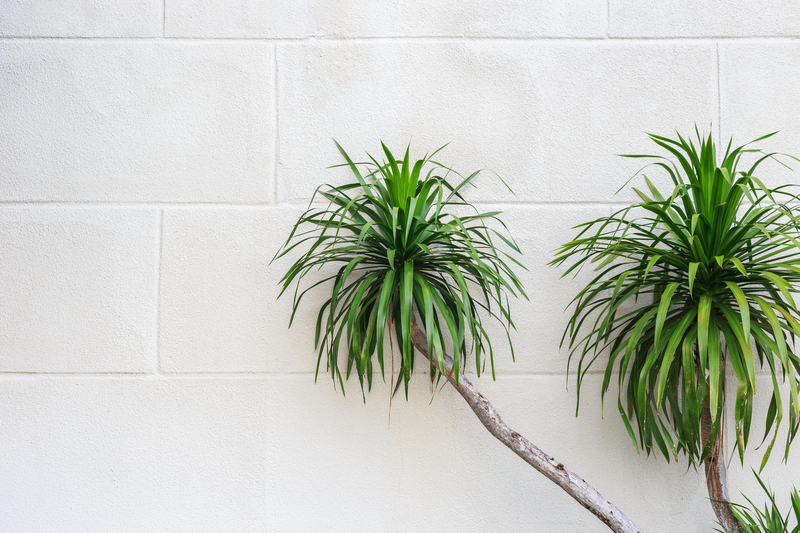Ensuring Your Garden's Safety During Severe Weather Events
Posted on 23/05/2025
Ensuring Your Garden's Safety During Severe Weather Events
With unpredictable weather patterns and increasingly frequent storms, safeguarding your garden from extreme weather is more essential than ever. Whether you're a seasoned gardener or a newcomer, understanding how to protect your sanctuary can save years of growth and investment.
Understanding the Risks: How Severe Weather Impacts Gardens
Severe weather events--such as storms, torrential rains, hail, snow, and extreme winds--pose significant threats to both the health and structure of your garden. Taking precautions to secure your garden before, during, and after these events is paramount to its longevity and vitality.
Types of Severe Weather and Their Effects
- High Winds: Strong winds can uproot trees, snap branches, and destroy lightweight structures like trellises and greenhouses.
- Heavy Rain and Flooding: Excess moisture can cause root rot, wash away valuable topsoil, and overwhelm drainage systems.
- Hail: Hailstones can shred leaves, break stems, and damage fruit and vegetable crops within minutes.
- Snow and Ice: Heavy accumulations can crush plants, particularly those with broad leaves or delicate branches.
- Drought and Heatwaves: Extended periods of heat can dry out soil, wilt plants, and increase vulnerability to pests.

Preparing Your Garden Before Severe Weather Strikes
Proactive preparation is the best way to ensure your garden's safety during severe weather events. Here's a comprehensive checklist to prepare:
1. Assessing Your Garden's Vulnerabilities
- Identify at-risk trees and branches. Prune dead or weak limbs regularly to prevent them from falling during storms.
- Evaluate drainage systems. Make sure pathways, beds, and lawns have sufficient drainage to prevent flooding.
- Examine garden structures. Inspect fences, arches, pergolas, and greenhouses for stability. Secure any loose fittings or panels.
2. Soil Management for Enhanced Protection
- Aerate and mulch soil to improve water absorption and prevent erosion during heavy rain.
- Add compost to promote root health and soil structure, making plants more resilient to extreme conditions.
- Install raised beds where possible to reduce risk of root rot and ensure better drainage.
3. Choosing and Positioning Plants Wisely
- Select wind- and weather-tolerant species suitable for your climate zone.
- Group sturdy shrubs on the windward edges to act as natural windbreaks for delicate plants inside.
- Stagger planting dates to minimize the risk of total loss during adverse events.
Best Practices for Protecting Your Garden During a Storm
1. Securing Garden Structures
- Close and lock greenhouses, sheds, and cold frames. Cover windows with plywood if high winds or flying debris are predicted.
- Remove and store lightweight items. Pots, garden furniture, and tools should be placed indoors or securely anchored.
- Reinforce fences and trellises. Check for rotten or loose panels and repair as needed.
2. Protecting Plants from Wind and Hail
- Cover vulnerable crops. Use floating row covers, garden fleece, or even overturned buckets for smaller plants.
- Stake tall plants. Support with robust stakes to prevent wind damage.
- Bring potted plants indoors. Move delicate or young plants into a garage, shed, or indoors if possible.
3. Preventing Flooding and Soil Erosion
- Check gutters and downspouts. Ensure they're clear to allow proper drainage away from beds.
- Install temporary barriers. Sandbags or mulch barriers can redirect water flow and protect vulnerable beds.
- Pause watering schedules. Turn off irrigation before expected rainfall to avoid waterlogging.
Post-Storm Recovery: Helping Your Garden Bounce Back
Even the best preparations can't prevent all damage. After severe weather, swift action is crucial to restore and protect your garden from ongoing issues.
1. Assess and Address Safety Hazards
- Inspect for debris and fallen branches. Remove hazards promptly, but check for wildlife before clearing heaps.
- Check structural integrity. Ensure that fences, trellises, and sheds are safe before reentering the garden.
2. Rescue Damaged Plants
- Trim broken stems and branches. Use clean, sharp tools to remove damaged portions to help prevent disease spread.
- Right toppled plants. Re-stake and support any uprooted shrubs or perennials, and firm the soil around the roots.
- Apply a gentle feed. Liquid seaweed or other mild fertilizers can help plants recover from stress.
3. Restore Soil Structure
- Aerate waterlogged beds. Use a hand fork to gently loosen soil, encouraging air flow around roots and faster drying.
- Top up lost mulch or compost. Replace any that has washed away to prevent weeds and improve moisture balance.
Special Considerations for Different Types of Gardens
1. Vegetable Gardens
- Use cloches or tunnels for seedlings and transplants--these shields provide protection from hail and wind.
- Harvest ripe produce ahead of storms to reduce loss and spoilage.
- Rotate crops post-storm to minimize disease risks in waterlogged soil.
2. Ornamental Gardens
- Deadhead and prune regularly to maintain structure and reduce wind damage risks.
- Mulch around ornamental beds to stabilize soil temperature and prevent erosion.
3. Container Gardens
- Move containers to sheltered positions such as patios, under eaves, or indoors during severe weather events.
- Anchor large planters or group them together around a windbreak for extra security.
Investing in Long-Term Garden Safety Solutions
While immediate preparations help, designing a resilient garden from the outset is the most effective strategy for ensuring your garden's safety during severe weather events.
Create Natural Windbreaks
- Plant evergreen hedges or robust shrubs along the most wind-exposed boundaries of your property.
- Layer planting to slow wind speed and reduce the risk of damage within the core of your garden.
Install Permanent Drainage Solutions
- French drains, swales, and deep mulching can prevent waterlogging and erosion in vulnerable areas.
- Rain barrels and water butts collect excess rainwater, which can be reused during drought conditions.
Drought-Resilient Landscaping
- Add drought-tolerant plants to areas susceptible to periods of no rain.
- Install drip irrigation systems that conserve water and deliver moisture directly to roots.
Smart Technology for Modern Garden Protection
Weather Alerts and Monitoring
- Subscribe to local weather alerts: Stay updated with real-time notifications for storms, heatwaves, and floods.
- Use soil moisture sensors: Monitor conditions to automate irrigation and protect from overwatering or drought.
Automatic Garden Systems
- Smart irrigation controls: Schedule watering based on upcoming weather to avoid unnecessary moisture before storms.
- Remote control covers: Deploy protective coverings using timers or smart devices ahead of hail or strong winds.

Frequently Asked Questions About Garden Safety in Severe Weather
How can I quickly protect my garden before an unexpected storm?
Move portable items indoors, cover sensitive plants with garden fleece or sheets, and stake tall plants for immediate support.
What's the best way to handle waterlogged soil after heavy rain?
Aerate beds with a fork, avoid walking on wet areas, and mix in organic matter to improve drainage. Remove standing water with channels or siphons if necessary.
Can I prevent hail damage in my vegetable beds?
Yes--use row covers, shade cloths, or even lightweight mesh panels over cages. These form a barrier that softens the impact of hailstones.
Final Thoughts: Building a Resilient Garden
Ensuring your garden's safety during severe weather events requires ongoing vigilance, preparedness, and smart planning. By understanding the risks, preparing ahead of time, acting quickly during storms, and fostering resilience with smart landscaping, you can protect your beloved plants and enjoy a thriving garden season after season--no matter what the weather brings.
Remember: A resilient garden is not just about survival--it's about cultivating a safe, beautiful space that brings joy for years to come.
- Regularly monitor weather forecasts for early warnings.
- Adapt your planting and maintenance strategies to suit your local climate's most common threats.
- Invest in high-quality materials and thoughtful design for permanent protection.
Make severe weather preparedness a part of your gardening routine, and reap the rewards of a safe, healthy, and bountiful garden--no matter the storm clouds ahead.



